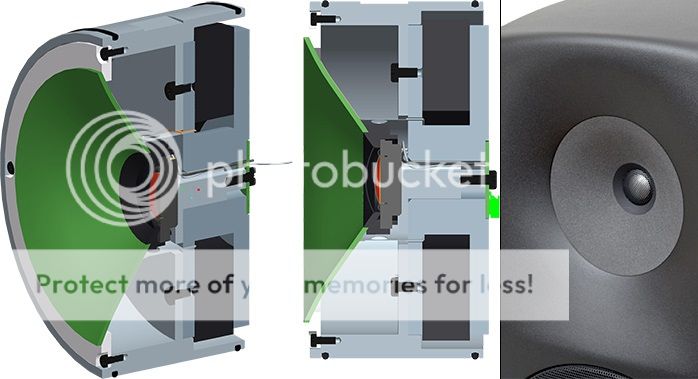MajorFubar
New member
- Mar 3, 2010
- 690
- 9
- 0
chebby said:Now for two undoubted game changers...


Ah! I was surprised no-one so far had mentioned those two!
I'd like to nominate the Cyrus 2 amplifier

...and the Ariston RD11

chebby said:Now for two undoubted game changers...




MajorFubar said:...and the Ariston RD11

chebby said:CnoEvil said:I agree, and mine is still going strong as well. The reason it's not on the list, is down to the original Naim Nait.....and I didn't know which deserved it more.
Neither.
The big 'game changer' was the NAD 3020.
1.1 Million units sold (not including later derivations).
chebby said:Maybe (in the context of the Linn LP12 certainly) but you then have to go back to the Thorens TD150 (1965) and then Ed Villchur's AR XA (1962).
So I think the 'game changer' would be the orignal AR XA.
plastic penguin said:AR speakers I heard in Laskys many moons ago. Can't remember the model but they were very high end at the time. Seem to remember, though can't be sure, powered by a Sansui or a huge Marantz receiver. (circa 1977 I think).
CnoEvil said:plastic penguin said:AR speakers I heard in Laskys many moons ago. Can't remember the model but they were very high end at the time. Seem to remember, though can't be sure, powered by a Sansui or a huge Marantz receiver. (circa 1977 I think).
I'm glad you've stopped groaning and decided to join in. 😛
The idea of the thread was not meant to be yet another list of "what I like", but a discussion about which components should be considered genuine "landmark products," because they brought something different to the table ie. In terms of thinking, SQ, and/or innovation.
My original list was simply a "document for demolition" and a trigger for debate.....so any reasoning one can give behind any examples, will help make a stronger case.
CnoEvil said:My original list was simply a "document for demolition" and a trigger for debate.....so any reasoning one can give behind any examples, will help make a stronger case.
steve_1979 said:Does iTunes count?
Downloadable music files had already been done before but Apple's iTunes along with the original iPod was the first to make it work for the masses by making it simple and user friendly enough for non computer geeks to use.
steve_1979 said:Genelec 8260A - The unique concentric midrange and tweeter driver design allows a level of clarity and stereo imaging better than other concentric speaker drivers by making the flush midrange driver part of the tweeters acoustic lense. Other concentric speaker drivers distort the tweeter sound by having a less than ideal shape and also by having the midrange driver part having an effect on the tweeters phase as it moves in and out. Have a read about the Genelec 8260A concentric speaker driver because they're a unique, interesting and clever design which works well.
CnoEvil said:IMO. The place on the list should be reserved for the first company do this.
Kef started doing it in 1988 (Uni-Q), but I think Tannoy have been promoting " true point source" for over 40 years. If anyone has been doing it longer, I'd like to know.
I'm not making any more "factual proclamations", unless I know for definite. :doh:

steve_1979 said:I agree that Tannoy also deserve a place in this thread as they were the first to do concentric speaker drivers. But so far all concentric drivers have been flawed. Genelec (and to a lesser extent some of Kef's speakers) are the first to overcome the flaws inherent in concentric drivers. This combinded with Genelec's effective application of active speaker design and built in DSP makes the 8260A a game changer as far as clarity and stereo imaging are concerned (IMO 🙂 ).
CnoEvil said:This opens another side to this debate ie. Should the places be solely reserved for the original innovators, or the companies that improved / popularized / commercialized it?.... Thinking of the likes of the LP12 here.
Also, to what extent should commercial success be taken into account?
steve_1979 said:Interesting point. :?
Many so called 'game changers' aren't original concepts but rather an evolution and refinement of an existing design. The iPod and iTunes are a good example of this.
CnoEvil said:Kef started doing it in 1988 (Uni-Q), but I think Tannoy have been promoting " true point source" for over 40 years. If anyone has been doing it longer, I'd like to know.
steve_1979 said:I've just received a message from Ashley James who was reading this thread (apologies to the mods if posting this is an infringement of forum rules).
"Concentric drivers first appeared in the thirties and probably from Altec Lansing in the States (Beatles were monitored on awful Altec 604's) or Telefunken in Germany from whom Tannoy (a PA company ) pinched the design from as war reparations in 1946."
Al ears said:I'd add on the Colorfly C4 Pro. It certainly changed the way I listen to music on the move and has recently spawned a whole new list of similar machines, from the likes of Astell & Kern et al.

